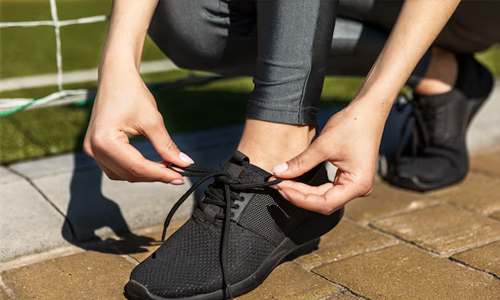Running might seem simple—you just lace up and go, right? But if you’re not running properly, you could risk injuries, burnout, or plain frustration. Whether you’re training for your first 5K, running to lose weight, or jogging to clear your head, learning how to run properly can make all the difference in performance and enjoyment.
1. Start With the Right Shoes

Running in the wrong shoes is one of the fastest ways to end up with shin splints, sore knees, or foot pain. Invest in a good pair of running shoes designed for your foot type. Many running stores offer free gait analysis to help you choose the right fit.
2. Mind Your Posture

Keep your head up, eyes looking ahead (not down), shoulders relaxed, and arms swinging naturally at your sides. Avoid slouching or overextending your stride. A slight forward lean from the ankles (not the waist) helps with momentum.
3. Breathe with a Rhythm
Try to breathe in through your nose and out through your mouth. A simple 2:2 breathing pattern—two steps while inhaling, two steps while exhaling—works for most beginners. If you feel out of breath too quickly, slow down your pace.
4. Don’t Skip Warm-Ups or Cool-Downs

Before every run, spend 5–10 minutes doing dynamic stretches like leg swings, walking lunges, or jumping jacks. After your run, cool down with a walk and static stretches to avoid stiffness and reduce injury risk.
5. Start Slow and Build Gradually
If you're just starting out, don’t push yourself to run a mile non-stop. Try walk-run intervals (like 1 minute running, 2 minutes walking). Increase your running time each week by no more than 10% to give your body time to adjust.
6. Hydrate and Fuel Smart

Drink water before and after your runs, and consider a small snack 30 minutes before (like a banana or toast with peanut butter). For runs longer than 45 minutes, a mid-run electrolyte boost can help you stay energized.
7. Avoid Common Mistakes
Overstriding, poor posture, skipping rest days, and running too fast too soon are some of the most common beginner errors. Respect your body’s signals—soreness is normal, pain is not.
8. Consistency Over Speed

You don’t need to be the fastest runner. Consistency will improve your pace naturally over time. Three runs a week, combined with rest and recovery, is enough to build endurance and form.
FAQs
What is the correct running form for beginners?
Keep your back straight, lean slightly forward, engage your core, and let your arms swing naturally. Land midfoot and avoid overstriding.
How long should a beginner run?
Start with 15–20 minutes using walk-run intervals. Gradually increase your run time as your stamina improves.
How can I avoid getting injured while running?
Warm up before you run, stretch after, wear the right shoes, rest adequately, and increase intensity gradually.
Can I run every day?
While some runners do run daily, beginners should aim for 3–4 days a week with rest or cross-training in between.
Should I run on an empty stomach?
It depends on your body. A light snack before running can prevent fatigue. Early morning runners may need fuel, while others prefer fasting runs.













